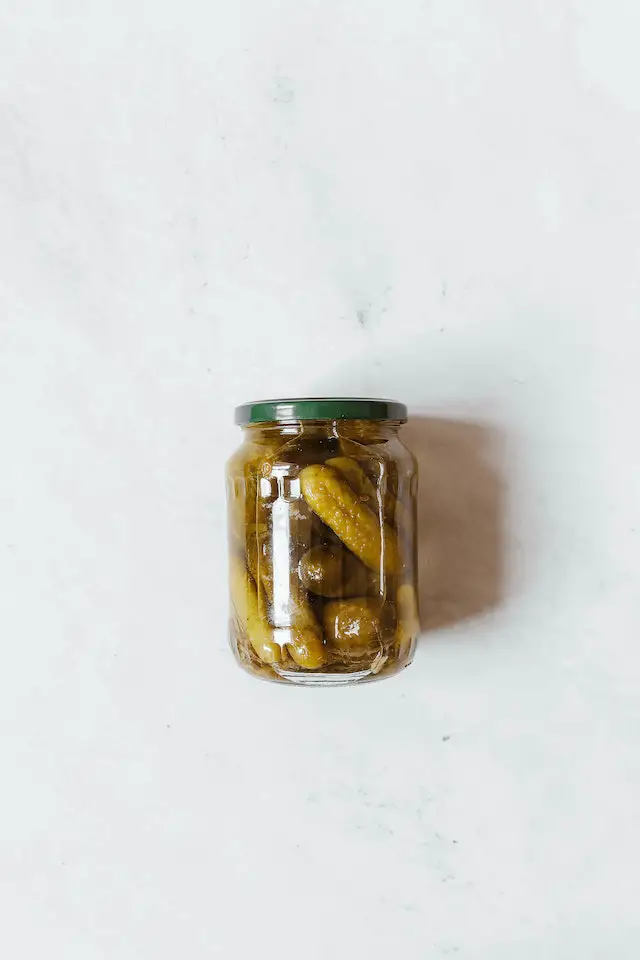There are a lot of reasons why the pickles in your pickle juice or the juice itself would turn white or become cloudy.
In this article, we’ll explore some of the common causes of white pickles and tell you exactly what to do about them.
Why are pickles turning white?

You used hard water
One likely reason why your pickles or the brine they’re submerged into has turned white is because of the type of water you used.
Soft water is always recommended for pickling because it is free from dissolved salts of metals such as magnesium and calcium which are insoluble and appear as particles in water, which in effect, turns the water cloudy.
Hard water on the other hand has these minerals, which is why whenever you use it to make pickle juice, the juice has the potential to turn cloudy from the salts of the metals that are insoluble.
What can you do about it?
It’s simple, make sure you’re using soft water whenever you’re making pickles. And how you can tell if you have soft water or hard water at home?
It’s simple, try washing your clothes or hands with the water and make sure to use a basic soap like Castile that is free from detergents which would make the water bubbly and foamy regardless of what type of water it is.
Check to see if the water lathers easily, which would indicate soft water. But if you have scum developed on the surface of the water, then it’s likely a hard water.
You can also fill up a transparent bottle with the water to the one-third level, then add few drops of Castile soap to the water.
Shake vigorously and observe if you have a cloudy water that doesn’t develop a lot of bubble. If that is the case, you more than likely have hard water as soft water would easily develop bubbles on top and the water underneath would be clear and not cloudy.
Having confirmed that you have hard water in your home, you can soften it before using (if you cant outsource soft water elsewhere) by boiling it for 20 minutes and then covering and allowing it to sit overnight. Then extract the water and leave the sediments at the bottom.
It’s kahm yeast
Another reason why your pickle juice turned white might be because it had kahm yeast growing on it.
Kham yeast is a white milky film that develops on the surface of pickle juice that are made using the fermentation method i.e. using salt and water.
Kahm yeast is completely harmless although it can alter the taste and flavor of the pickles submerged underneath, and as such, you should skim it off the surface when you notice it.
Its mold
Mold can be another reason why you have a white deposit on your pickles or pickle juice. Unlike kahm yeast which is totally harmless to the body however, mold can pose a threat to ones health due to the fact that some species are capable of producing mycotoxins which can be harmful to the body when consumed.
Mold would generally form when you have a ferment that is exposed to air at the same time where the brine solution covering the pickles is weak or not up to standard.
When you discover mold growing on the surface of your ferment, which you can identify as the fuzzy looking entity that is white (or of a different color), make sure to discard the batch completely and start all over again.
You used salt with anti-caking agent
When pickling, it is always recommended to use salt that is free from anti-caking agents like kosher. Other types of salts have these agents which can turn brine water cloudy during fermentation.
While there is actually nothing you can do to turn the water back to a clear state, you can always repackage the pickles (after they fully ferment) into a new jar with a better brine solution using a salt that doesn’t have an anti-caking agent in it.
Its just normal lactic acid bacteria growth
There are two major ways in which pickling is done. One involves the use of only a brine solution which consists of water and salt in defined ratios, and the other includes the used of salt, water and vinegar.
In the former method, the salt permits the good bacteria in the medium to flourish while simultaneously suffocating the harmful ones, leading to the production of lactic acid which does the preservation, and flavoring.
In the latter, vinegar acts as the acid which preserve the vegetables and gives the pickles flavor. Salt also works in the same manner in terms of purpose, but not to the extent that vinegar does.
In fermentation pickling, the first one, you would almost always run into a cloudy brine in the course of fermentation, which indicates that lactic acid bacteria are present in good population and are doing their job well. Such brine is perfectly safe to consume and the pickles under it are safe to eat too.
In the vinegar method however, the appearance of cloudiness during pickling might indicate spoilage or any of the factors mentioned above.
Check the pickles carefully to see whether they have begun to spoil. If so, make sure to discard them promptly.

